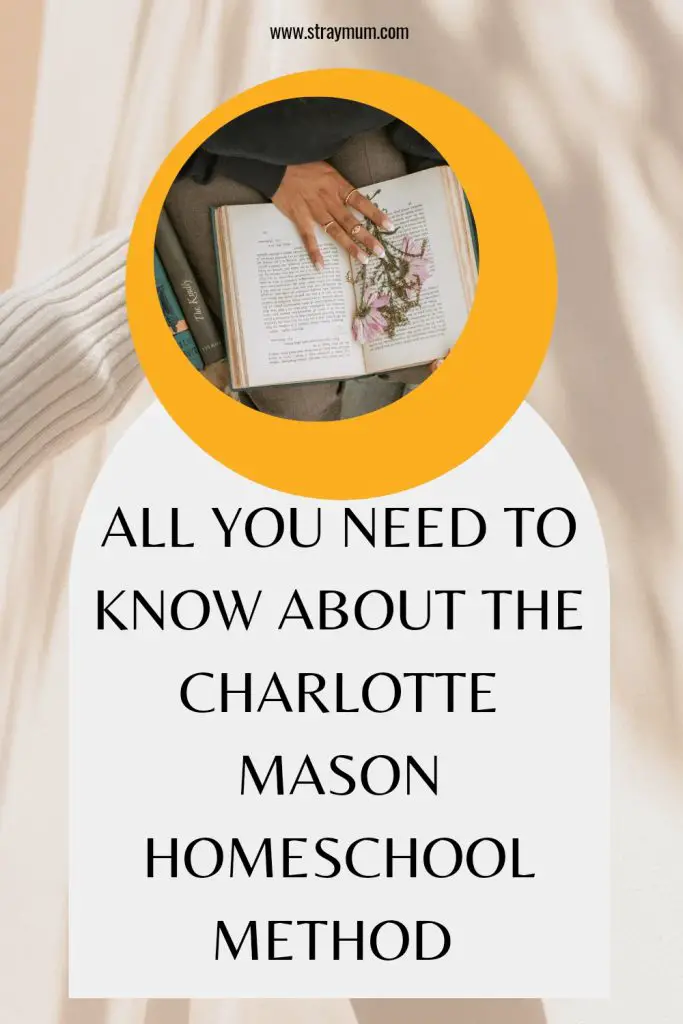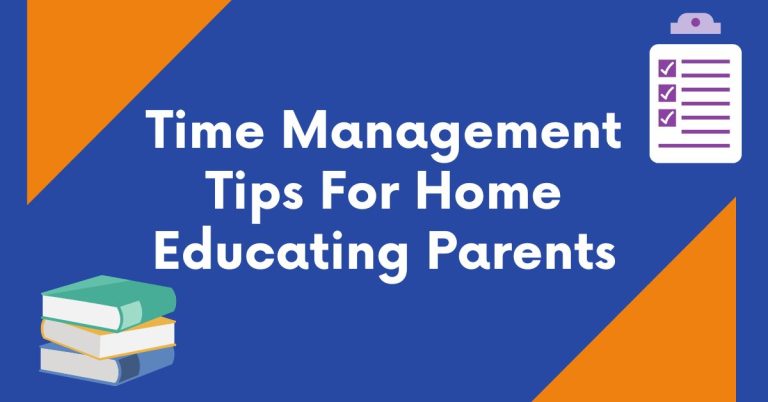Charlotte Mason Homeschool Method
Charlotte Mason was a British Educator at the turn of the 20th Century who was passionate in her determination to lay out the foundations for an effective and complete homeschooling programme.
The quote by Charlotte Mason “Education is an atmosphere, a discipline, a life” is what drove her educational approach and also the formation of habit training.
Principles of the Charlotte Mason Homeschool Method
The Charlotte Mason method of homeschooling is an educational philosophy that focuses on developing the whole person, emphasizing the importance of living books, narration, and nature study. In this article, we’ll explore the principles and techniques of this method to help you understand how it works and how you can implement it in your homeschooling.
Principles of the Charlotte Mason method
The Charlotte Mason method is built upon several guiding principles that shape the way learning takes place. These principles include:
Principle 1: Education is an Atmosphere, a Discipline, and a Life
This principle stresses the importance of creating a learning environment that fosters a love of learning, instills good habits and character, and provides opportunities for real-life experiences.
Principle 2: Use Living Books
Living books are well-written and engaging books based on living ideas. They inspire a love of learning and help children develop their imagination and critical thinking skills.
Principle 3: Narration
Narration is a technique used in the Charlotte Mason method where children are encouraged to articulate what they have learned in their own words. This practice helps them develop their communication and comprehension skills.
Principle 4: Nature Study
Nature study is an essential aspect of the Charlotte Mason method. It involves spending time outdoors, observing and interacting with nature, and cultivating an appreciation for the natural world.
Techniques of the Charlotte Mason Method
To implement the Charlotte Mason method in your homeschooling, there are several techniques you can employ. These include:
Technique 1: Short Lessons
The Charlotte Mason method recommends shorter, focused lessons that capture the student’s attention and leave them eager for more. The philosophy holds that frequent, brief lessons are more effective than longer, less frequent ones.
Technique 2: Copywork and Dictation
Copywork and dictation are methods used to help children develop their handwriting, spelling, and grammar skills. Copywork involves copying passages from living books, while dictation involves the student writing down a passage that is read aloud to them.
Technique 3: Nature Journals
Nature journals are a key component of the Charlotte Mason method. They allow children to document their observations of the natural world, which enhances their observational and artistic abilities.
Technique 4: Picture Study
Picture study is a technique used to cultivate a child’s appreciation of art. It involves studying a specific artist or work of art in depth and discussing the elements of the artwork with the child.
Technique 5: Composer Study
Composer study is similar to picture study but focuses on music. It involves listening to the works of a particular composer and discussing the elements of the music with the child.
Conclusion
The Charlotte Mason method of homeschooling is a holistic approach to education that places emphasis on the whole person, the use of living books, narration, and nature study. By implementing the principles and techniques of this method, you can provide your child with an immersive and engaging educational experience that will inspire a lifelong love of learning.
Frequently Asked Questions (FAQ) About Charlotte Mason Homeschooling
Q: Can you tell me about the Charlotte Mason method of homeschooling and how it differs from other homeschooling methods?
A: The Charlotte Mason method of homeschooling is an educational philosophy that emphasizes a holistic approach to learning. It relies on living books, narration, nature study, and other techniques to help children develop into well-rounded individuals. Unlike other homeschooling methods that may rely heavily on textbooks and workbooks, the Charlotte Mason method focuses on real-life experiences and the use of quality literature to cultivate a love for learning.
Q: How can I get started with the Charlotte Mason method of homeschooling? Are there any resources available?
A: If you’re interested in the Charlotte Mason method, there are many resources available to help you get started. You can read Charlotte Mason’s original writings, join online forums or support groups, and seek the guidance of experienced Charlotte Mason homeschoolers. Additionally, you can find a variety of curriculum materials, living books, and other resources that are designed specifically for the Charlotte Mason method.
Q: What are some key principles and techniques of the Charlotte Mason method, and how can I incorporate them into my homeschooling?
A: Some of the key principles and techniques of the Charlotte Mason method include the use of living books, narration, short lessons, nature study, picture study, and composer study. To incorporate these techniques into your homeschooling, you may need to adjust your approach to lesson planning, curriculum selection, and teaching methods. There are numerous resources available to help you learn more about these techniques and how to incorporate them effectively into your homeschooling.
Q: How can I choose living books that are appropriate for my child’s age and reading level?
A: Choosing appropriate living books can be a challenge, but there are many resources available to assist you. You can consult book lists, online forums, and homeschooling curriculum providers to find recommendations for living books that are appropriate for your child’s age and reading level. It’s also a good idea to read reviews and sample pages before making a purchase to ensure that the book is a good fit for your child.
Q: What is narration, and how can I incorporate it into my homeschooling?
A: Narration is a technique used in the Charlotte Mason method where children are encouraged to retell what they have learned in their own words. This technique helps children develop their comprehension, memory, and communication skills. To incorporate narration into your homeschooling, you can have your child retell a chapter or section of a living book, or describe an activity or field trip in their own words.
Q: How can I plan short, focused lessons that are engaging and effective?
A: Planning short, focused lessons can take practice, but there are many resources available to help you. You can consult curriculum providers, online forums, and experienced Charlotte Mason homeschoolers for tips and strategies for planning engaging and effective lessons. It’s important to keep in mind your child’s interests, learning style, and developmental stage when planning lessons.
Q: How can I incorporate nature study and outdoor activities into my homeschooling?
A: Nature study and outdoor activities are an important aspect of the Charlotte Mason method. To incorporate them into your homeschooling, you can plan regular nature walks or hikes, visit local parks or nature preserves, and engage in hands-on activities like gardening or birdwatching. You can also use nature journals to record observations and findings, and to inspire creativity and reflection.
Q: How can I help my child develop good habits and character through the Charlotte Mason method?
A: Developing good habits and character is a key focus of the Charlotte Mason method. To help your child develop good habits and character, you can incorporate daily routines and habits into your homeschooling, such as regular chores, consistent bedtimes, and healthy mealtimes. You can also use stories
Q: How much time should I spend on each subject per day when using the Charlotte Mason method of homeschooling?
A: The Charlotte Mason method emphasizes short lessons and a broad curriculum that covers a variety of subjects each day. While the exact amount of time spent on each subject may vary depending on your child’s age, interests, and learning style, a general rule of thumb is to aim for no more than 20-30 minutes per subject for younger children and 45-60 minutes per subject for older children. It’s also important to include breaks and time for outdoor play or other activities throughout the day.
Q: Can I use the Charlotte Mason method of homeschooling for children with special needs?
A: Yes, the Charlotte Mason method can be adapted to meet the needs of children with special needs. It’s important to keep in mind your child’s individual strengths and challenges and adjust your approach to lesson planning and teaching methods accordingly. You may need to modify the curriculum or use additional resources and support to ensure that your child is able to learn and thrive.
Q: How do I create a supportive and engaging learning environment for my child when using the Charlotte Mason method?
A: Creating a supportive and engaging learning environment is key to the success of the Charlotte Mason method. Some tips for creating a positive learning environment include setting clear expectations and boundaries, providing a variety of stimulating materials and activities, incorporating opportunities for hands-on learning and exploration, and fostering a love of learning through encouragement and positive feedback.
Q: How do I handle socialization when homeschooling with the Charlotte Mason method?
A: Socialization is an important aspect of a child’s development, and it’s important to provide opportunities for your child to interact with other children and adults. Homeschooling groups, community activities, and extracurricular programs can provide opportunities for socialization and can also help your child develop a sense of community and belonging.
Q: Is the Charlotte Mason method suitable for high school students?
A: Yes, the Charlotte Mason method can be adapted for high school students. Some families choose to use the method exclusively for high school, while others incorporate elements of the method alongside other educational approaches. It’s important to keep in mind your child’s individual goals and interests when planning a high school curriculum and to ensure that your child is meeting the necessary requirements for graduation and college admissions.
Q: How do I balance the Charlotte Mason method with other homeschooling approaches?
A: Balancing the Charlotte Mason method with other homeschooling approaches can be a personal decision based on your child’s needs and interests. Some families choose to use the Charlotte Mason method exclusively, while others incorporate elements of the method alongside other approaches such as unschooling, Montessori, or classical education. It’s important to stay flexible and open to experimentation as you find the approach that works best for your family.
Q: How do I balance the different subject areas and activities within the Charlotte Mason method?
A: Balancing the different subject areas and activities within the Charlotte Mason method can be a challenge, but it’s important to prioritize your child’s interests and needs. You can create a schedule or routine that includes a variety of subject areas, such as reading, writing, math, science, history, art, music, and nature study. It’s also important to leave time for outdoor play, free play, and relaxation. You can adjust your schedule and curriculum as needed to better meet your child’s needs and interests.
Q: How do I find a community of Charlotte Mason homeschoolers to connect with?
A: Finding a community of Charlotte Mason homeschoolers can provide valuable support and resources. You can search for local homeschooling groups, attend conferences and workshops, or join online forums and social media groups. It’s important to connect with other homeschooling families who share your educational philosophy and goals, and who can offer encouragement and advice.
Q: Can the Charlotte Mason method be adapted for children with special needs or learning challenges?
A: The Charlotte Mason method can be adapted for children with special needs or learning challenges. You can modify your approach to teaching and curriculum to better meet your child’s needs, and you can use accommodations and supports as necessary. It’s important to consult with experts and professionals who can offer guidance and resources, and to advocate for your child’s educational needs.
Q: How does the Charlotte Mason method prepare children for college and career?
A: The Charlotte Mason method emphasizes the development of the whole person, including strong communication skills, critical thinking skills, and a love of learning. These skills can be valuable for success in college and career. Additionally, the Charlotte Mason method emphasizes the importance of real-life experiences and hands-on learning, which can help children develop practical skills and knowledge that can be applied in college and career settings.
Q: Are there any downsides or criticisms of the Charlotte Mason method?
A: Like any educational philosophy, the Charlotte Mason method has its critics and potential downsides. Some critics argue that the method may not provide enough structure or rigor for some students, while others argue that the method may be too focused on traditional Western literature and values. Additionally, some families may find the method challenging to implement or may not resonate with its philosophy and approach. It’s important to carefully consider your own educational goals and values before adopting any homeschooling method.

For further information about Charlotte Mason based curriculum have a look at Ambleside Online which has a free home school curriculum that uses Charlotte Mason’s classically-based principles.


